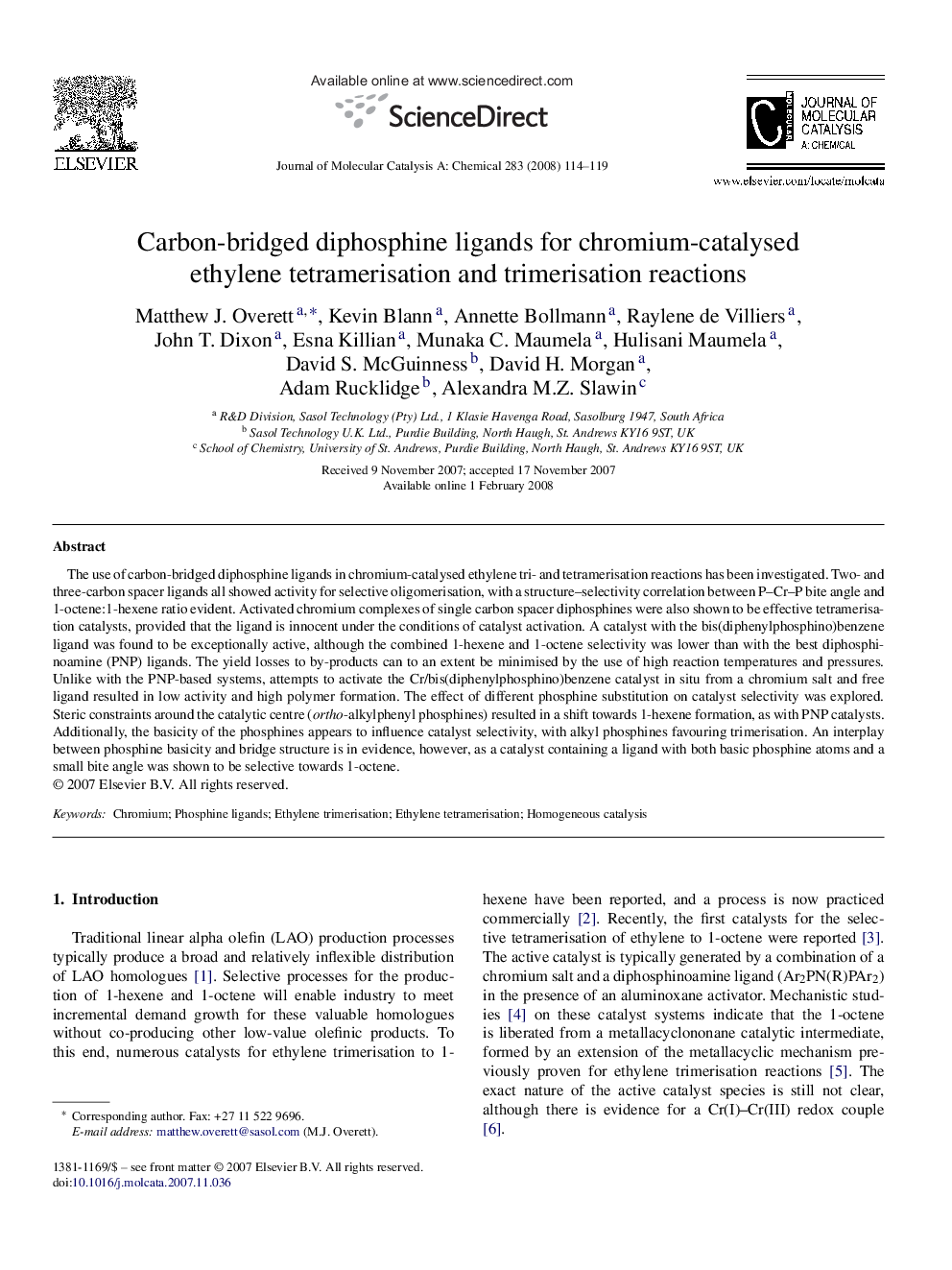| کد مقاله | کد نشریه | سال انتشار | مقاله انگلیسی | نسخه تمام متن |
|---|---|---|---|---|
| 68071 | 48502 | 2008 | 6 صفحه PDF | دانلود رایگان |

The use of carbon-bridged diphosphine ligands in chromium-catalysed ethylene tri- and tetramerisation reactions has been investigated. Two- and three-carbon spacer ligands all showed activity for selective oligomerisation, with a structure–selectivity correlation between P–Cr–P bite angle and 1-octene:1-hexene ratio evident. Activated chromium complexes of single carbon spacer diphosphines were also shown to be effective tetramerisation catalysts, provided that the ligand is innocent under the conditions of catalyst activation. A catalyst with the bis(diphenylphosphino)benzene ligand was found to be exceptionally active, although the combined 1-hexene and 1-octene selectivity was lower than with the best diphosphinoamine (PNP) ligands. The yield losses to by-products can to an extent be minimised by the use of high reaction temperatures and pressures. Unlike with the PNP-based systems, attempts to activate the Cr/bis(diphenylphosphino)benzene catalyst in situ from a chromium salt and free ligand resulted in low activity and high polymer formation. The effect of different phosphine substitution on catalyst selectivity was explored. Steric constraints around the catalytic centre (ortho-alkylphenyl phosphines) resulted in a shift towards 1-hexene formation, as with PNP catalysts. Additionally, the basicity of the phosphines appears to influence catalyst selectivity, with alkyl phosphines favouring trimerisation. An interplay between phosphine basicity and bridge structure is in evidence, however, as a catalyst containing a ligand with both basic phosphine atoms and a small bite angle was shown to be selective towards 1-octene.
The use of carbon-bridged diphosphine ligands in chromium-catalysed ethylene tri- and tetramerisation reactions was investigated. A catalyst with the bis(diphenylphosphino)benzene ligand was found to be among the most active selective oligomerisation catalysts yet reported. Various aspects of ligand design were found to independently affect the catalyst selectivity (1-octene:1-hexene ratio), including steric constraints around the catalytic centre, phosphine basicity, P–Cr–P bite angle and ligand bridge structure.Figure optionsDownload as PowerPoint slide
Journal: Journal of Molecular Catalysis A: Chemical - Volume 283, Issues 1–2, 18 March 2008, Pages 114–119